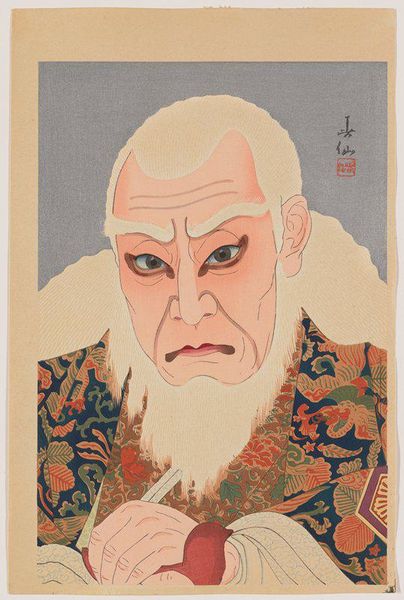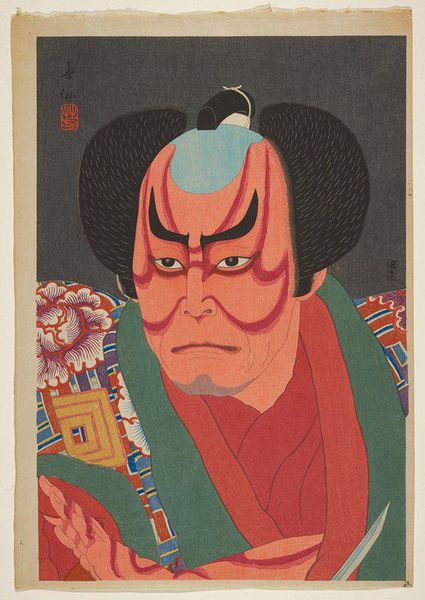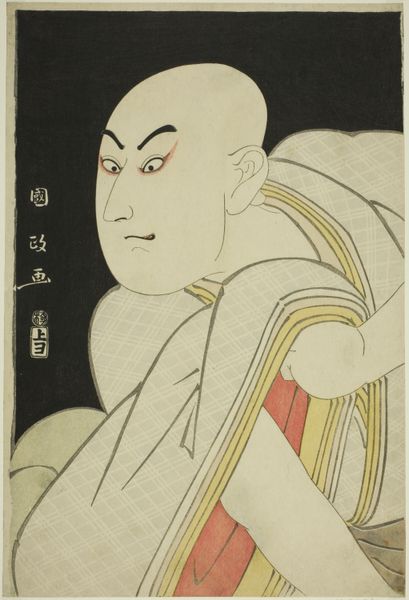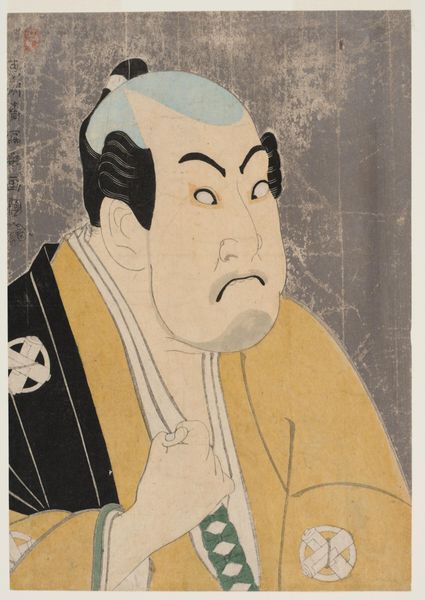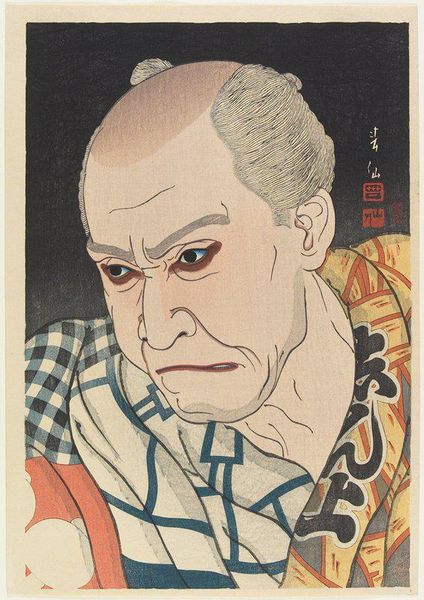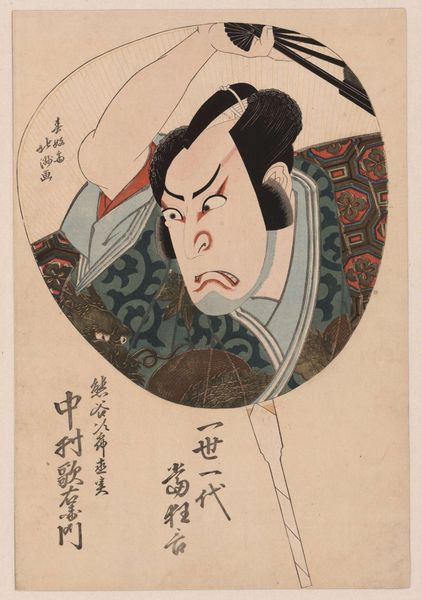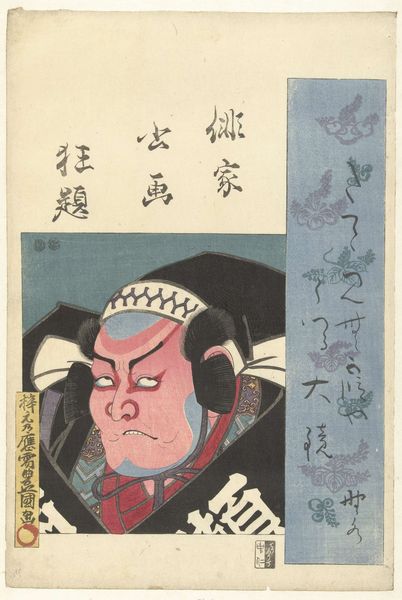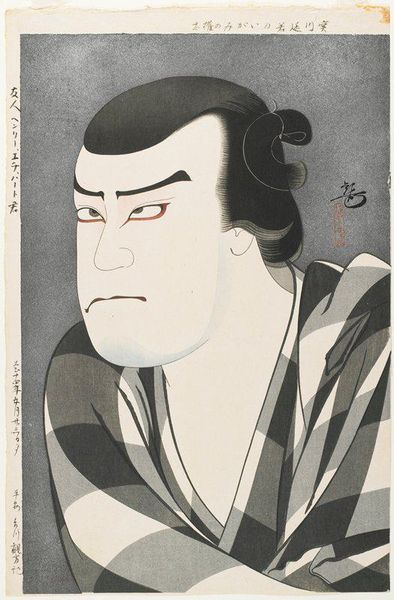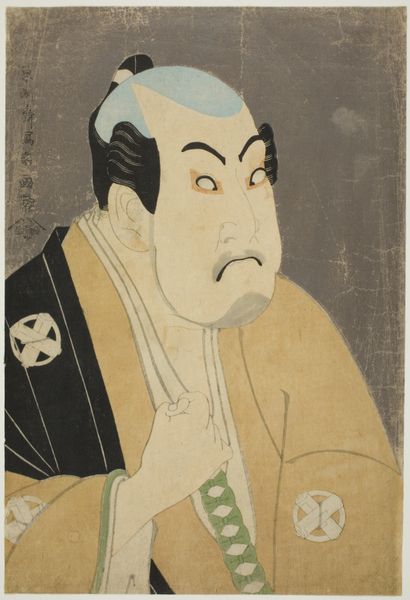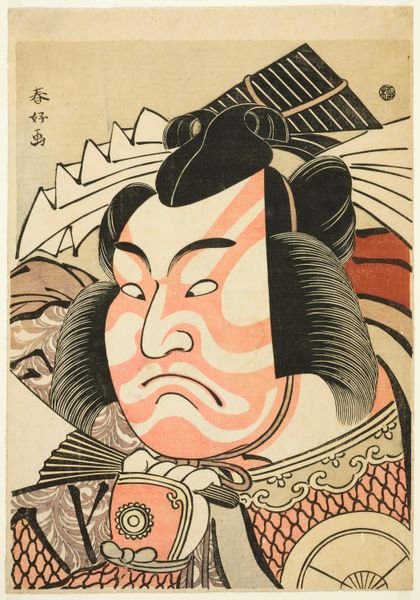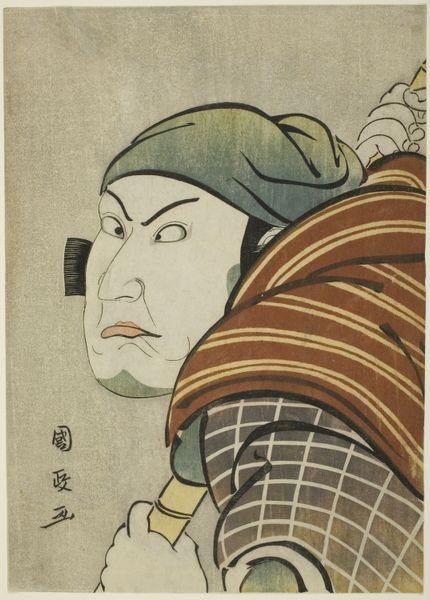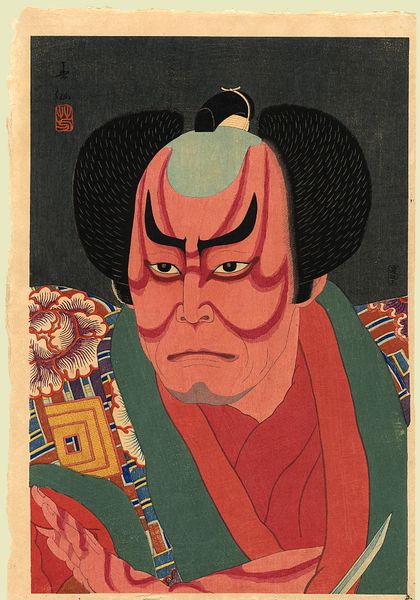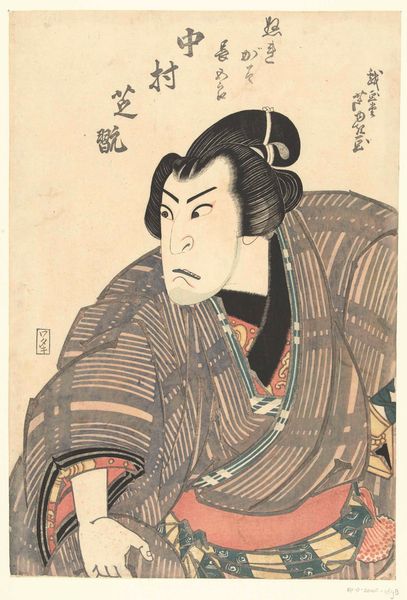
Actor Matsumoto Kōshirō VII as the White-Bearded Ikyū Possibly 1929
0:00
0:00
Dimensions: 15 × 10 1/16 in. (38.1 × 25.56 cm) (image)23 × 19 × 1 1/2 in. (58.42 × 48.26 × 3.81 cm) (outer frame)
Copyright: No Known Copyright
This striking woodblock print of Actor Matsumoto Kōshirō VII, by Natori Shunsen, captures the actor in character. The power of the piece lies in its dramatic color choices and bold lines. It feels very immediate, as though the artist was interested in capturing the energy of the moment. There's something almost cartoonish in the red markings around the eyes, aren't they wild? What’s so impressive is how the artist uses this to convey a sense of heightened emotion. Everything about the image is theatrical; the intense stare, the elaborate costume, the grey background. Even the whiteness of the face, framed by that white wig, feels like a mask. I'm reminded of some of the bold portraiture of Gauguin, though the graphic quality here is very much its own thing. This is definitely an artist who understands the power of an image to create a world of its own. It's a reminder that art, like theater, is a space of transformation and possibility.
Comments
minneapolisinstituteofart about 2 years ago
⋮
First design of the supplement set. Based on Matsumoto Kōshirō VII as the White-Bearded Ikyū, in reality Iga Heinaizaemon, in the scene Miuraya kōshi saki of the play Sukeroku: Yukari no Edo zakura 助六由縁江戸桜 三浦屋格子先 (Sukeroku: Flower of Edo), performed at the Kabuki Theater, March 1929. Ikyū (identified by the long white beard) is a wealthy old samurai who tries to come between the lovers Hanakawado Sukeroku, a dashing otokodate (chivalrous commoner) and the beautiful prostitute Agemaki of the Miuraya.
Join the conversation
Join millions of artists and users on Artera today and experience the ultimate creative platform.
